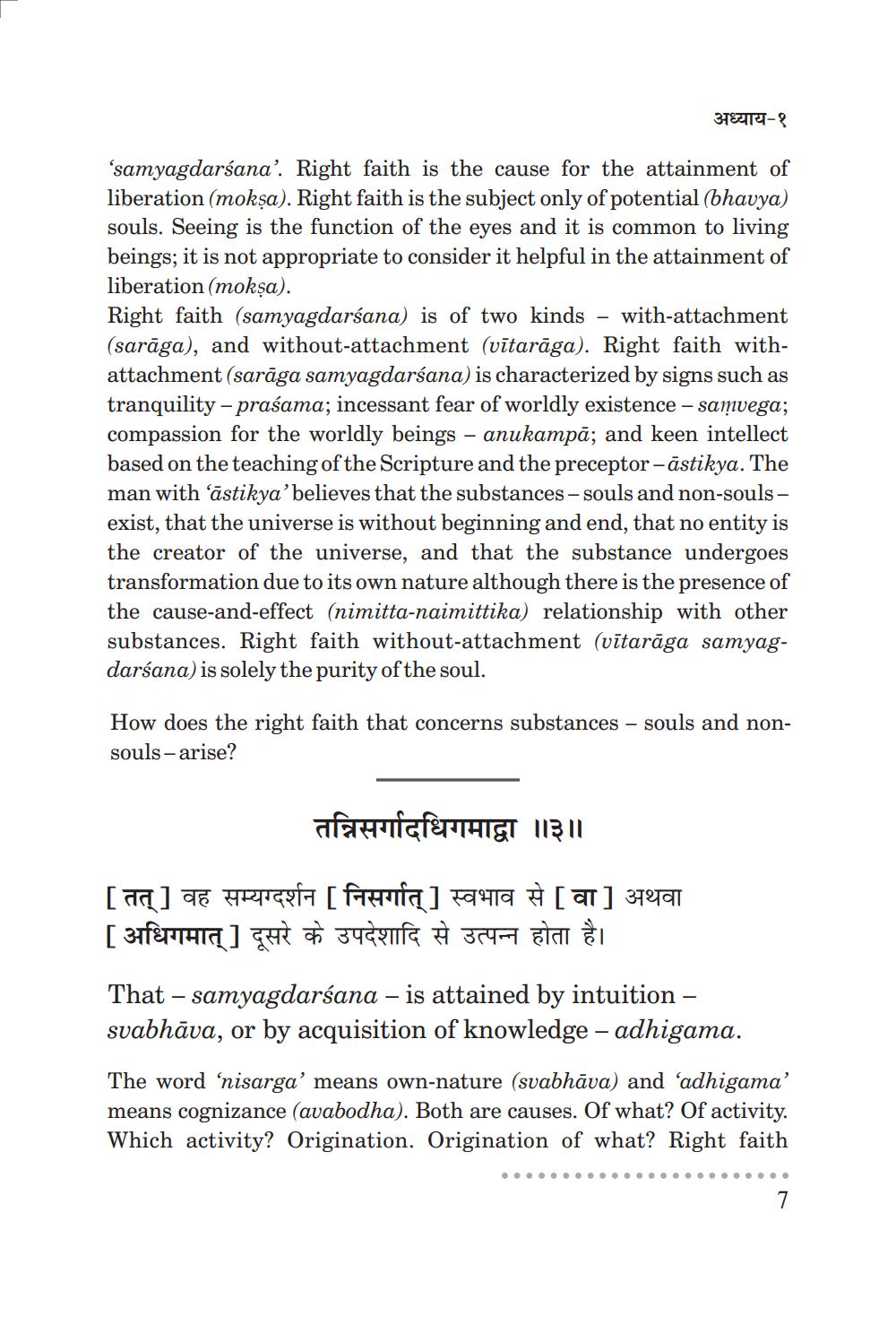________________
अध्याय-१
'samyagdarśana'. Right faith is the cause for the attainment of liberation (mokşa). Right faith is the subject only of potential (bhavya) souls. Seeing is the function of the eyes and it is common to living beings; it is not appropriate to consider it helpful in the attainment of liberation (mokşa). Right faith (samyagdarśana) is of two kinds – with-attachment (sarāga), and without-attachment (vītarāga). Right faith withattachment (sarāga samyagdarśana) is characterized by signs such as tranquility - praśama; incessant fear of worldly existence - samvega; compassion for the worldly beings - anukampā; and keen intellect based on the teaching of the Scripture and the preceptor -āstikya. The man with ‘āstikya'believes that the substances - souls and non-soulsexist, that the universe is without beginning and end, that no entity is the creator of the universe, and that the substance undergoes transformation due to its own nature although there is the presence of the cause-and-effect (nimitta-naimittika) relationship with other substances. Right faith without-attachment (vītarāga samyagdarśana) is solely the purity of the soul.
How does the right faith that concerns substances - souls and nonsouls - arise?
तन्निसर्गादधिगमाद्वा ॥३॥
[तत् ] वह सम्यग्दर्शन [ निसर्गात् ] स्वभाव से [वा] अथवा [अधिगमात् ] दूसरे के उपदेशादि से उत्पन्न होता है।
That - samyagdarśana - is attained by intuition - svabhāva, or by acquisition of knowledge – adhigama.
The word 'nisarga' means own-nature (svabhāva) and 'adhigama' means cognizance (avabodha). Both are causes. Of what? Of activity. Which activity? Origination. Origination of what? Right faith
.
.
.
.
.
.
.
.
.
.
.
.
.
.
.
.
.
.
.
.
.
.
.
.




